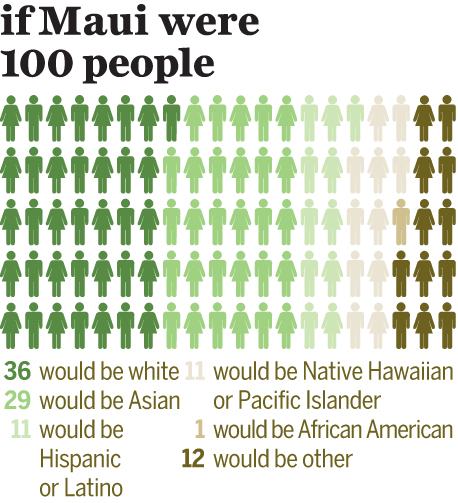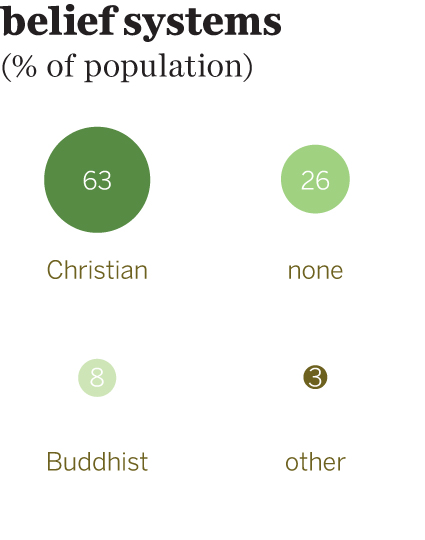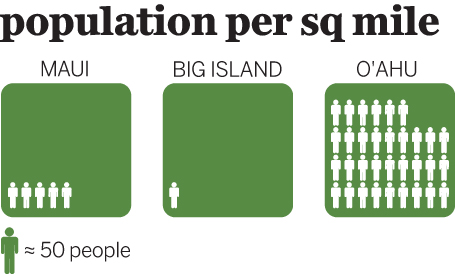Maui Today
Whether it's commercial development, eco-minded activism or discussions about the modern sovereignty movement, the biggest issues on Maui today are intricately connected with the Hawaiian concept of aloha ʻaina, which is a term meaning 'love and respect for the land.' Specific issues dominating recent headlines? The closure of the island's last sugar mill, new initiatives geared to protecting the island's parks, and efforts to ban genetically modified crops.
Best on Film
The Devil at 4 O'Clock (1961) Spencer Tracy & Frank Sinatra hang out at Lahaina's Pioneer Inn
Riding Giants (2004) Documentary spotlighting surf culture, with big-wave surfers riding waves off Maui
Just Go With It (2011) Adam Sandler & Jennifer Aniston have misadventures at the Grand Wailea Resort
Hereafter (2011) Clint Eastwood's film shot scenes on Front St in Lahaina
Best in Print
Middle Son (2000) Deborah Iida describes 1950s Maui through the eyes of a sugar-plantation laborer
The Maui Coast: Legacy of the King's Highway (2015) Daniel Sullivan captures the enduring majesty of the historic King's Hwy in this vibrant photo book
A Hawaiian Life (2000) Grammy-winning slack key guitarist and host of the Slack Key Show at Napili Kai Beach Resort, George Kahumoku Jr shares stories about life in Hawaii
Maui: A History (2014) This easy-to-read book by Cummins E Speakman Jr and Jill Engledow tells the story of the Valley Isle
Staying Hawaiian
Hawaiian culture today is about much more than melodic place names and luau shows. Traditional arts and healing arts are experiencing a revival, ancient heiau (temples) and fishponds are being restored, native forests replaced and endangered birds bred and released.
Although few island residents can agree on what shape the fragmented Native Hawaiian sovereignty movement should take, or even if it should exist at all, its grassroots political activism has achieved tangible results. Decades of protest and a federal lawsuit filed by sovereignty activists finally pressured the US military into returning the island of Kahoʻolawe (which it had used for bombing practice since WWII) to the state in 1994. In 2011, then-governor Neil Abercrombie signed into law a bill recognizing Native Hawaiians as the state’s only indigenous people.
In 2016 Disney released the movie Moana, an immediate blockbuster. In the film, Moana, the daughter of an ancient Polynesian chieftain, sets out to sea on a mission to restore her people's seafaring ways. She's helped by the demigod Maui, who is based on an actual figure in Polynesian mythology. Filmmakers worked closely with anthropologists and cultural advisers to stay accurate and culturally sensitive. There were some missteps, however, like the film's depiction of Maui as heroic, but also overweight and slightly buffoonish. Effective storytelling or harmful cultural appropriation? Maybe the key lies in the discussions and awareness sparked since the film's release.
Time Marches On
The sugar mill operated by Hawaiian Commercial & Sugar in central Maui shut down operations in 2016. Owned by Alexander & Baldwin (A&B), a company with roots stretching back to the island's earliest missionaries, the mill had come under intense criticism in recent years for its sugarcane burns. Many residents were concerned that the resulting smoke was linked to lung disease. But the reason for the closure? Past and projected operating losses. The sugarcane plantation, which opened in 1870 and eventually covered 36,000 acres, was the last in Hawaii. Future plans for the land are up in the air, although A&B has discussed using the acreage for a diverse range of agricultural projects.
In Makena, 300 people lost their jobs when the Makena Beach & Golf resort closed for good. The striking, fortresslike hotel and its surrounding property had operated as a resort – last known as the Maui Prince Resort – for 30 years.
In a thoroughly modern move, the State Department of Health granted licenses to eight medical-marijuana dispensaries. Two are for dispensaries in Maui. One of them expects to begin dispensing cannabis products from its office in Kahului in 2017.
Protecting the Parks
In recent years, heavy crowds have flocked to the summit of Haleakalā National Park to watch the sunrise. To control the number of visitors and protect the fragile landscape, the park has decided to require predawn visitors to make an advance trip reservation and pay a small fee. How bad was the crowding? Summit parking lots can accommodate about 150 cars, but the number of vehicles has regularly exceeded 300, with more than 1000 visitors often bumping elbows at sunrise viewpoints.
Officials at the Division of Land and Natural Resources (DLNR) are also considering implementing a parking fee at a popular snorkeling spot – informally known as The Dumps – at remote ʻAhihi-Kinaʻu Natural Area Reserve. This fragile snorkeling destination can see up to 500 visitors per day. A paved parking lot here is already in the works.
Maui County & Hawaii Stats
Population
164,637
Land Area
1,161.5 sq Miles
Unemployment
2.7%


